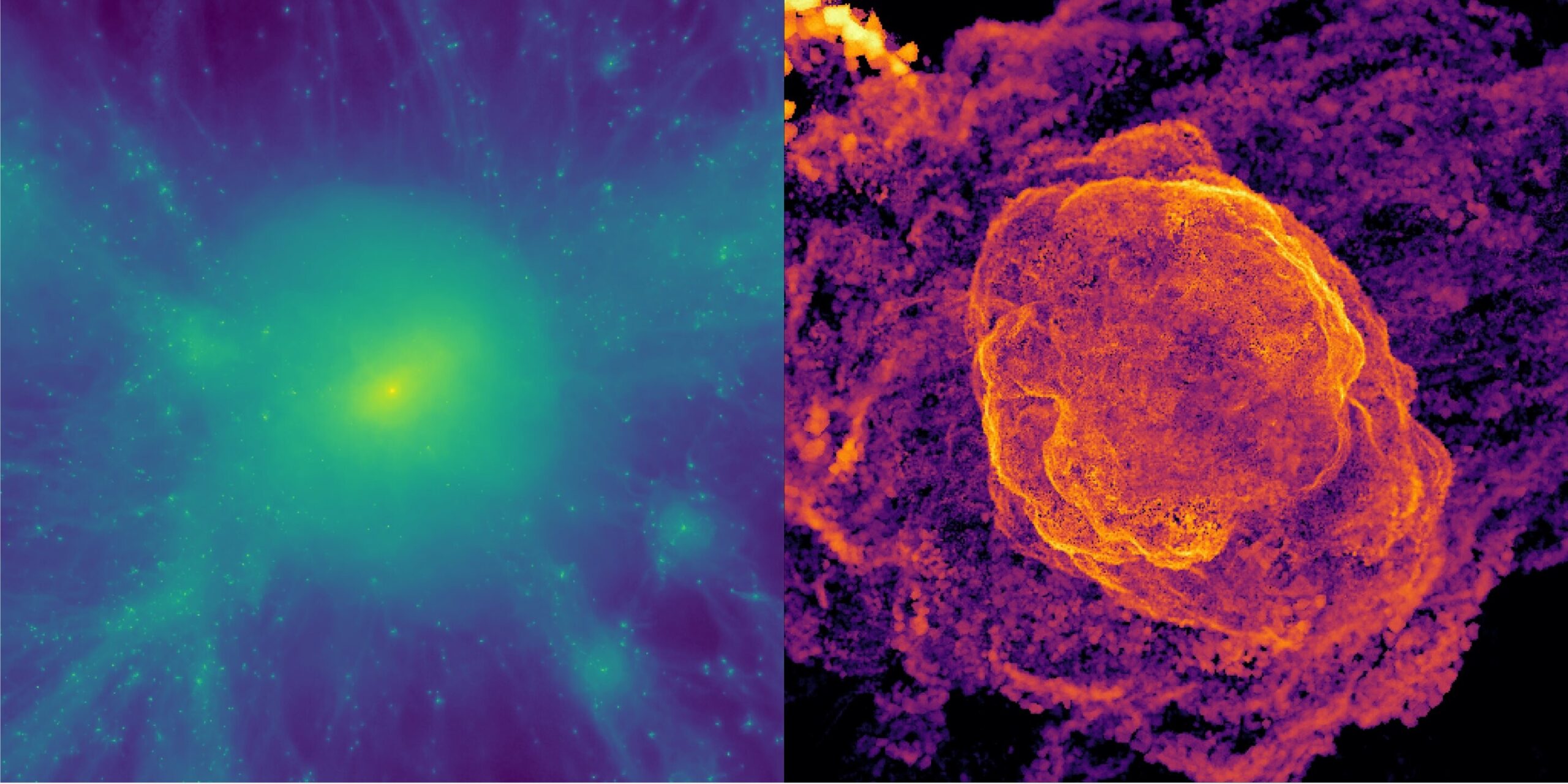Galaxy clusters, the largest structures in the universe bound by gravity, collide with immense force, creating shock waves that stretch for millions of light-years. These collisions generate radio relics —vast arcs of radio emission powered by energized electrons spiraling within magnetic fields. However, recent observations have exposed contradictions: unexpectedly strong magnetic fields, discrepancies between radio and X-ray measurements of shock strength, and shock waves that appear too weak to explain the observed radio emission.
Researchers at the AIP institute have now resolved these puzzles using a novel multi-scale modeling approach. Their work, published on the arXiv preprint server, connects the physics of galaxy cluster collisions—spanning billions of light-years—with the behavior of electrons at scales a trillion times smaller.
The key lies in how shock waves interact with the cluster’s outer edges. When a shock wave collides with infalling gas, it compresses the material, forming a dense sheet that moves outward. This sheet then encounters further gas clumps, creating turbulence that strengthens and twists magnetic fields to the observed intensities. This process explains the unexpectedly high magnetic field strengths.
Furthermore, the model reveals why radio and X-ray observations disagree. Radio emission originates from the strongest parts of the shock front, while X-ray measurements reflect the average, weaker shock strength. The discrepancy isn’t a contradiction; it’s a consequence of observing different parts of the same phenomenon.
Finally, the study demonstrates that even though the average shock strength appears low, the strongest regions can still energize electrons efficiently. Because most of the radio emission comes from these localized high-intensity areas, the overall theory of electron acceleration at shocks remains valid.
This breakthrough resolves long-standing puzzles surrounding radio relics, connecting large-scale structure formation with fundamental particle physics. The research team plans to build on this success to address remaining mysteries, furthering our understanding of these extreme cosmic environments
